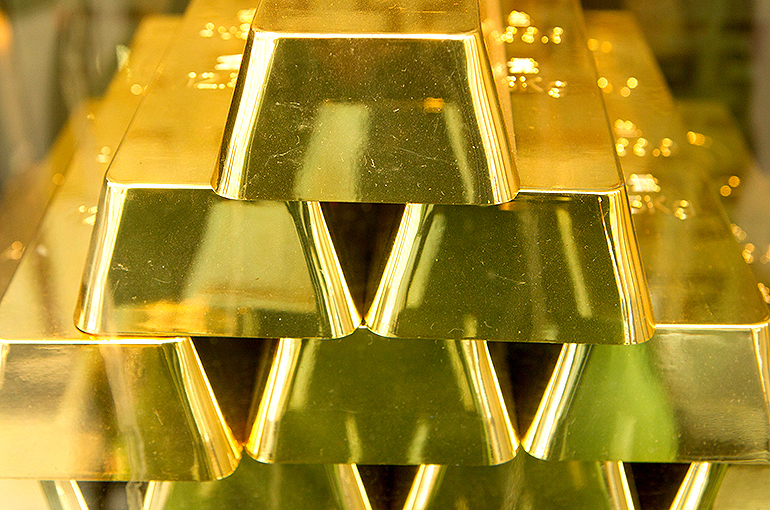 China Expands Gold Holdings for 7th Straight Month in May; Forex Reserves Edge Higher
China Expands Gold Holdings for 7th Straight Month in May; Forex Reserves Edge Higher(Yicai) June 9 -- China’s gold reserves rose for the seventh straight month in May, accompanied by a modest rise in foreign exchange reserves, amid easing tariff tensions and a mildly weakening US dollar. Analysts expect the gold accumulation trend to continue.
China's gold holdings reached 73.8 million ounces at the end of May, up 60,000 ounces from April, the People's Bank of China announced recently.
International gold prices have surged sharply this year. Both COMEX gold futures and London spot gold ended May higher, despite heightened volatility throughout the month.
Wang Qing, chief macro analyst at Golden Credit Rating, noted that easing tariff tensions between the United States and China last month slightly reduced demand for safe-haven assets, causing a brief correction in international gold prices.
However, Wang expects gold prices to remain on an upward trajectory for the foreseeable future. He emphasized that China’s increasing gold holdings are driven more by a desire to optimize the structure of international reserves than by short-term cost concerns.
Wang also pointed out that China’s gold reserves, which accounted for 7 percent of the country’s international reserve assets as of May 31, remain well below the global average of around 15 percent, suggesting room for continued accumulation.
Moreover, gold is widely regarded as the ultimate settlement asset. Continued gold purchases by the PBOC could help enhance the international credibility of the yuan and support the internationalization of the redback.
Rising Forex Reserves
On the same day, the State Administration of Foreign Exchange reported that China’s foreign exchange reserves stood at USD3.29 trillion as of May 31, up USD 3.6 billion (or 0.1 percent) from April 30.
The U.S. Dollar Index (DXY) edged down 0.2 percent in May after steeper losses in April. The influence of April’s sharp dollar depreciation -- previously a major driver of the appreciation in China’s non-dollar assets -- has now weakened considerably.
According to Wang, the dollar’s rapid depreciation was primarily due to cooling US-China tariff tensions and easing capital outflows from dollar-denominated assets. Notably, the DXY dropped nearly 10 percent between its highs and lows over the past five months -- a historically steep decline by typical standards.
Amid relatively stable US economic fundamentals, the depreciation suggests that market pessimism toward the dollar may be nearing its end -- a shift increasingly reflected in the greenback's resilience, Wang concluded.
Editor: Emmi Laine